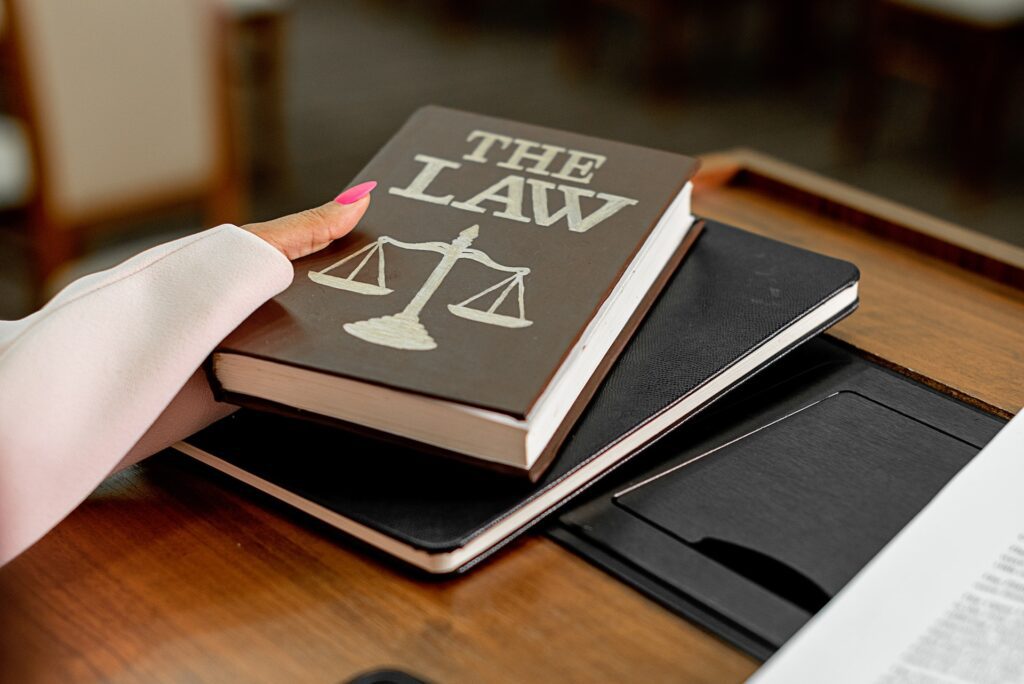Personal injury is the most common form of litigation. In 2021, personal injury filings accounted for 138,436 cases in the US District Courts. Under personal injury law, accident victims can seek financial relief through a settlement or lawsuit for their injuries.
Most injured parties resolve their personal injury case through a settlement rather than going to trial. Settlements are often preferable, as they require less time and have lower costs. By settling their claims, personal injury victims avoid the stress and uncertainty of going to court.
But deciding the best course of action for your case depends on the circumstances involved. Whether you accept a settlement or go to trial, a personal injury lawyer can offer legal advice, ensuring you make an informed decision.
Are you contemplating a settlement agreement after sustaining personal injuries in an accident? The Personal Injury Center will walk you through the personal injury settlement process, ensuring you are informed at every stage.
Key Takeaways
|
Understanding Personal Injury Claims and Different Legal Grounds
Personal injuries cover physical and psychological harm, as well as property damage. These injuries can arise from various situations, including truck accidents, car accidents, slips and falls, defective products, and medical malpractice.
Regardless of the cause, personal injuries can lead to financial hardship. Fortunately, parties at fault for your accident may be held accountable for the resulting harm and financial losses you suffered. You can claim compensation from responsible parties by filing a personal injury claim.
A personal injury claim is a legal process of recovering financial compensation from the liable party and their
An accident case must have a legal basis to hold someone legally responsible for injuries and losses. The following are the three legal grounds for filing a personal injury claim:
Negligence
Negligence constitutes the majority of personal injury claims. It typically occurs when someone unintentionally causes harm because they failed to exercise reasonable care a normal person would under similar circumstances.
Every state has established acceptable standards of behavior to prevent harm to others. Breaching these standards and causing bodily injury and property damage may give rise to a negligence claim. A classic example is a driver violating traffic rules and causing a car crash.
In such incidents, the injured person can hold the at-fault party liable for negligence. But succeeding in a negligence claim requires proving certain elements. Otherwise, you may not be compensated for the harm you suffered.
Intentional wrongs
Alternatively, you can bring a claim for intentional torts if someone purposely acts to cause you harm. Cases involving intentional wrongs are often more challenging to prove than claims based on negligence.
You must demonstrate the liable party deliberately intended to injure you to establish an intentional tort claim. The responsible person may avoid liability if you cannot prove the intent element of an intentional tort.
As a result, many accident victims assert claims for both negligence and intentional torts in their cases. This approach allows them to recover compensation based on negligence if they are unable to establish intentional wrongs.
Examples of intentional torts common in personal injury cases include the following:
- Defamation
- Intentional infliction of emotional distress
- False imprisonment
- Assault and battery
Strict liability
In certain cases, you can pursue a personal injury claim based on strict liability. It’s a legal ground that allows you to impose legal responsibility on an individual or entity without proving they acted negligently or intentionally.
Strict liability applies to personal injury cases involving defective products, dangerous animals, and abnormally hazardous activities. For instance, suppose the physical harm and property damage result from faulty products. The product manufacturer and seller can be strictly liable for the resulting injuries.
It doesn’t matter whether the liable party was reckless or failed to exercise reasonable care. You can make a legal claim without demonstrating negligence or intent to harm. The key is to show you sustained injuries due to the responsible party’s dangerous product or actions.
Navigating the Settlement Process in a Personal Injury Claim


A personal injury settlement refers to the official agreement between the injured victim and the at-fault party or
Resolving a case through a settlement agreement enables disputing parties to move forward without the stress and unpredictability of litigation. But how do you reach a personal injury settlement?
The most crucial step is seeking prompt medical attention to evaluate and establish the injuries you suffered. Health and diagnostic reports from medical providers serve as evidence to help you secure fair monetary compensation.
Moreover, consulting with an experienced personal injury attorney is vital to determine whether you have a viable case. If so, they will help you initiate an injury claim and guide you through the steps of the accident settlement process. These steps include the following:
Sending a demand letter
Settlement negotiations start with a demand letter. It’s a formal communication addressed to the at-fault party’s
The purpose of sending a demand letter is to notify the insurer and formally request compensation for your injuries and losses. It also communicates your willingness to resolve the legal matter through settlement.
The following are some critical components you must include when drafting a settlement demand letter:
- Details of the accident and the parties involved
- Type and extent of your accident-related injuries
- Impact of the injuries on your everyday life and overall well-being
- Evidence and documentation showing the other party’s at fault for your losses
- Specific demands and amount of compensation you are seeking
Negotiating with the insurer
After sending the demand letter, the
The
Often, the
A personal injury attorney can help evaluate if accepting the settlement offer is a good choice. If not, your lawyer can engage in negotiations with the
The back-and-forth negotiations for personal injury settlement can last several months or longer, depending on the intricacies of your case.
Reaching a settlement agreement
After several rounds of negotiation, both parties may reach a mutual agreement on the amount and terms of compensation.
The next step is putting the settlement agreement in writing. The conditions of the settlement must be clearly outlined to avoid disputes concerning the facts. Additionally, the scope of the agreement may include present and future claims or be restricted to specific claims only.
The parties involved must sign the settlement agreement to make it legally binding. However, in some jurisdictions, the contract may require the court’s approval or the judge’s signature to be enforceable.
Proceeding to trial
Not all settlement negotiations end in a resolution. If both parties don’t agree on the settlement amount and conditions, the case may proceed to trial. Your lawyer can file a personal injury case and fight for the compensation you legally deserve in court.
The parties involved will have a chance to present their evidence and arguments before a jury or judge. But filing a complaint doesn’t mean your case will go to trial and reach a verdict. There are instances where a personal injury may settle even after filing a lawsuit.
Looking Into Your Personal Injury Settlement Breakdown


Personal injury settlement amounts can vary significantly per case. Depending on the circumstances, potential deductions and restrictions may affect the amount you are entitled to recover.
Being aware of the components of a personal injury settlement can help manage your expectations and make reasonable negotiations.
To give an overview of your claim’s worth, we’ll examine a typical personal injury settlement breakdown.
Recoverable damages
Damages refer to the monetary compensation you may receive after suffering harm caused by another person or entity.
Understanding what qualifies as damages in a personal injury claim is a good starting point for determining how much you can seek and receive. Below are the three damages you may recover in a personal injury case.
- Economic damages: These damages aim to reimburse you for your actual financial losses. Because they have exact monetary value, economic damages are easily quantifiable. They may include medical expenses, repair costs for property damage, lost income due to missing work, and other out-of-pocket expenses.
- Non-economic damages: These damages intend to compensate you for your intangible losses. Unlike economic losses, these are more challenging to calculate as they don’t have specific dollar amounts. Examples may include emotional distress, pain and suffering, and diminished quality of life.
- Punitive damages: Unlike the previous two, these damages do not aim to compensate you for your injuries and losses. Punitive damages aim to punish the liable party for their actions and deter similar misconduct in the future. These damages are awarded in rare circumstances, accounting for only five percent of verdicts.
Inherent limitations
Regardless of your injuries’ severity and losses, some factors may limit the amount of damages you can receive in a settlement. The following may lessen personal injury settlement proceeds:
- Insurance policy limits: The available
insurance coverage determines the maximum compensation the insurer will pay in your claim. Meaning theinsurance company will only compensate you up to the policy limits even if your claim is worth thousands more. But an attorney can help you explore alternative sources of compensation. - Comparative negligence: The state’s existing comparative negligence rule can affect your settlement amount. It reduces the damages you can recover based on the percentage of your fault. Suppose your total damages are $60,000, and you’re 20 percent at fault for the accident. In this case, you can only receive 80 percent of the damages, or $48,000.
- Individual factors: Your age, overall health, and pre-existing conditions before the accident can influence the settlement amount you may receive. The same is true for your earning capacity and previous history of similar claims.
Potential deductions
Unfortunately, you don’t get to keep all the settlement money. The following costs may be deducted from your settlement proceeds.
- Case expenses: Bringing a personal injury claim comes with numerous costs, such as court filing fees, copy expenses, and expert witness fees. Although you don’t have to pay these costs upfront, you’re responsible for covering them after reaching a settlement or winning a lawsuit.
- Legal fees: Most legal fees for personal injury cases are structured on a contingency fee arrangement. Meaning you don’t have to pay attorney’s fees upfront. But when you settle or win your case, the lawyer gets paid a percentage of your settlement proceeds or award, usually 30 to 50 percent.
Medical liens: Many health


Pro Tip
Receiving prompt medical care within 72 hours of your accident is crucial for maximizing your personal injury settlement. Medical records will help establish the severity of your injuries and their link to the incident.
Obtain Legal Assistance From a Competent Attorney
Getting injured in a personal injury accident can be financially stressful. Your bills may accumulate while recovering, and you cannot return to work. Considering the immense pain and financial burdens that follow after the accident, you should receive fair compensation.
But negotiating for a fair settlement can be challenging, as
A personal injury attorney will fight for your rights in the settlement negotiation process. They will ensure you get the maximum settlement you deserve. Get a free case evaluation at The Personal Injury Center to start your legal journey. We’ll connect you with a competent lawyer in your area.
Understand your personal injury settlement breakdown with a lawyer’s assistance. Contact The Personal Injury Center for reliable legal help.
FAQs on Personal Injury Settlement Breakdown
Can your attorney settle your personal injury case without your consent?
Clients must fully understand and consent to any legal matter, including personal injury cases. The attorney must inform you about a settlement offer from the opposing party and explain its implications. Your lawyer cannot bind you to any settlement agreement without your consent.
How much is the average personal injury settlement amount?
On average, the settlement amount for a personal injury can vary between $3,000 and $75,000. But you can expect to receive more or less, depending on the specific circumstances of your case. You'll need the assistance of a personal injury attorney to determine your case's actual worth.
What are the two payout options for personal injury settlements?
The two payout options for receiving the cash settlement from a personal injury claim are:
- Lump sum settlement: You'll receive the entire settlement amount for your injuries at once. While there won't be delays in obtaining the funds, you won't get any additional payments in the future. This option suits cases without long-term injuries or ongoing medical care requirements.
Structured settlement: Instead of receiving a single large payment, a structured settlement provides periodic payments over time. The frequency of payments differs, such as monthly, quarterly, or yearly. This payout option works best for cases that involve ongoing medical expenses and future income loss.



